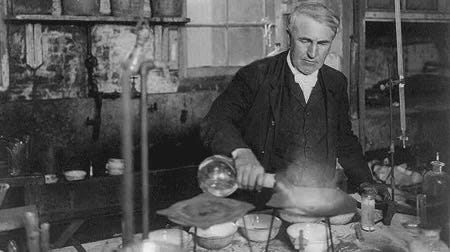What if it Wasn't?
A simple question and a formula for invention.
Many successful businesses or new technologies are built on answering the question, “What if (x) was not (y)?” Usually, (x) represents a commonly performed action, user experience or required task and (y) represents a (tired) norm or an undesirable attribute of (x).
Example: What if the exchange of goods and services (x) wasn’t so ambiguous (y)?
Humankind asked this question and eventually answered it with the introduction of currency, as a replacement for the bartering system.
Personal example: What if drawing with Photoshop brushes wasn’t so dissatisfying?
I asked this question and answered with my own custom brush creations, which eventually made their way into the hands of millions of customers around the world.
You don’t need to think on a grand scale to take advantage of this singular question-and-answer method. It can be applied within the boundaries of your niche, no matter how tiny or hyper-specific; thinking in these simple terms can help you stand out, win new clients, or even create an entirely new kind of business.
Remember, many of the frustrations you experience in your day-to-day life as an artist, designer, writer, musician, filmmaker, etc. are shared by your fellow practitioners. If you make even one common task more enjoyable, more efficient, more productive for yourself, then you can productize this solution and solve a real problem for your entire community.
Run through a typical workday in your mind. Think of everything required to get through your tasks: the most frequently used materials, tools, apps, and systems. What if one of these things (or even a part of one of these things) could be different? Better? Even by a factor of say, 15%? Wouldn’t you welcome this tiny improvement?
You probably would.
And so would most people who do what you do.
This may seem obvious to people reading this. But it wasn’t obvious to me.
I was making brushes for Photoshop to improve my personal drawing and painting experience for an entire decade before I thought of selling a single one to the public.
In fact, it took friends and colleagues pushing me to consider making a small collection of some of my favorite brushes and offering them for sale. Thank goodness for the people in our lives who believe in us and see in us the things we can’t see.
The “What-if-it-wasn’t” method is versatile; it can be applied to stories, to music, and to practically any other art form.
And it isn’t necessary for the method to actually solve a problem in order for it to be effective or useful. You can simply use this kind of thinking to surprise your audience with an unexpected take or a twist on the typical.
Think of it like a recipe: take something commonplace or standard and ask yourself how things could be different if one ingredient were changed.
“What if this stereotypically aggressive character was the gentlest in my cast?”
“What if this genre of music was performed at a much faster tempo?”
“What if this design approach wasn’t limited to architecture?”
I’m curious to know how you could apply this method to your own creative practice. Perhaps you already have. Please let me know in the comments.
What’s new
Tom Froese and I had a great conversation about art, life, and creativity.
I’ll be at IAMAG in Paris next week. If any of you are in the area, come say ‘hello.’
My Super Lasso for Photoshop is now available on Proko for 15% off.
The amazing Mike Lowery has opened up registration for his “Getting Paid to Draw” class and I highly recommend it.
Did you miss my post on A.I.? It is my most popular entry to date.
Thanks for reading. Until next time, take care of yourselves and each other, remember to be kind, and I’ll say, Ciao for now.
Kyle // You can find me here.



